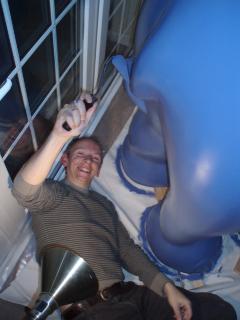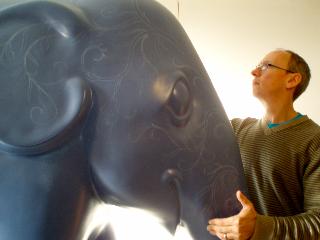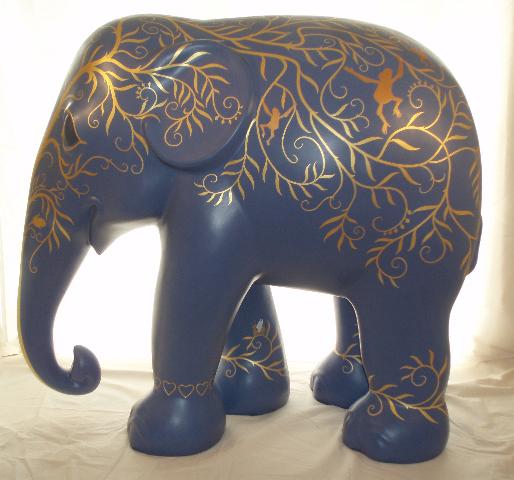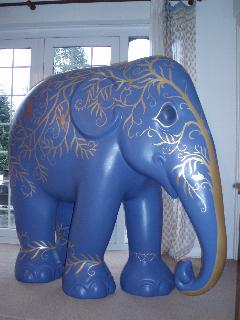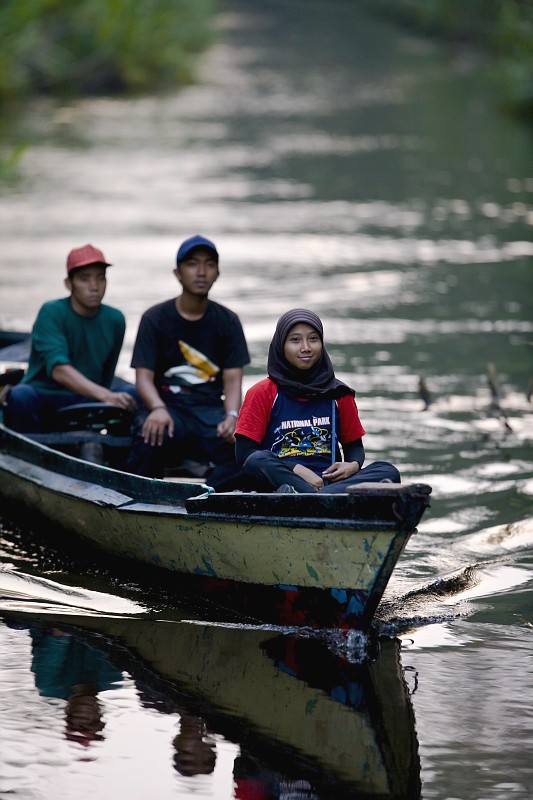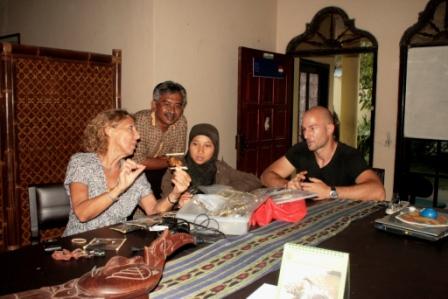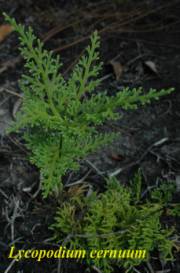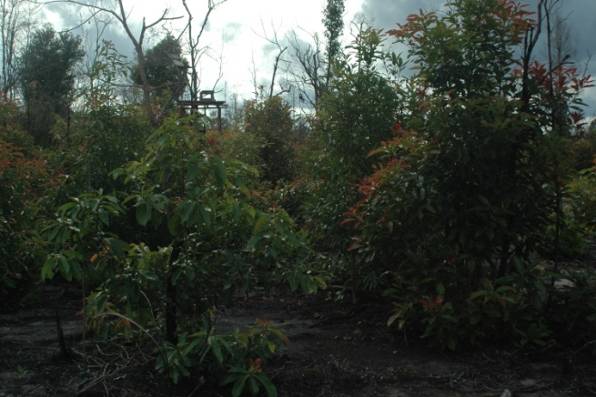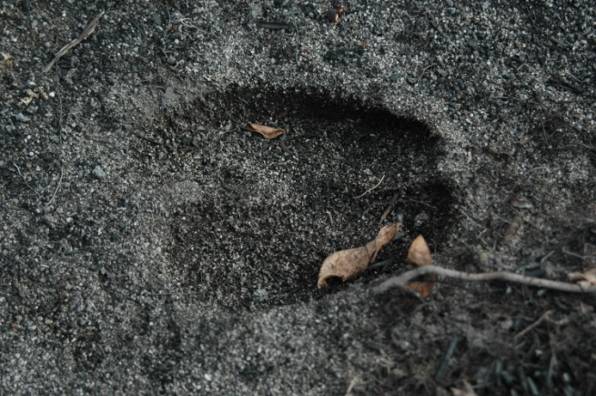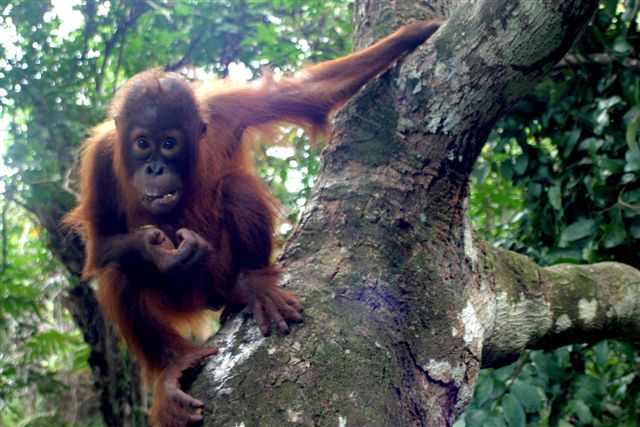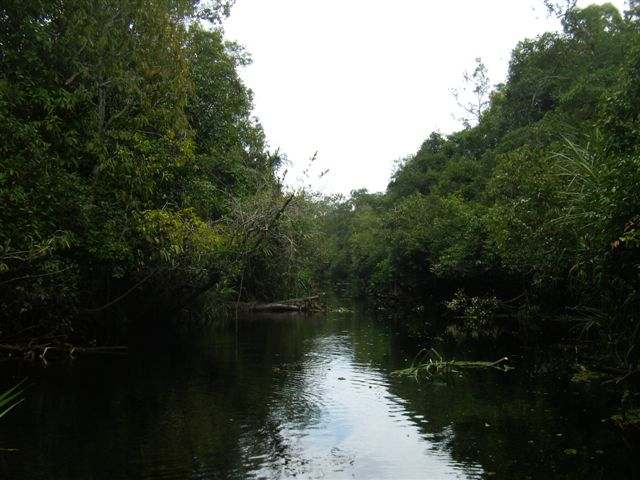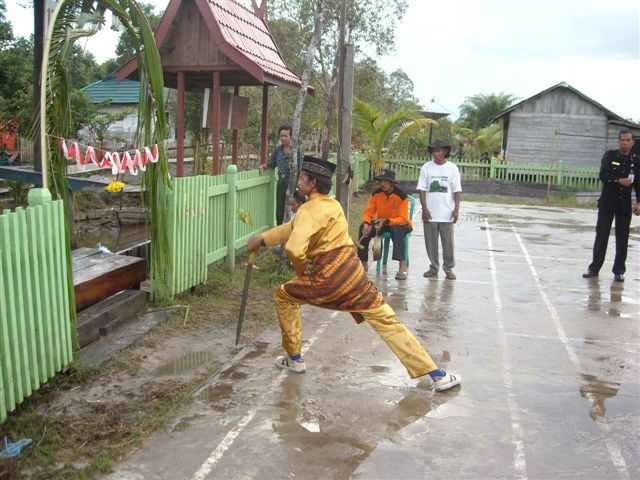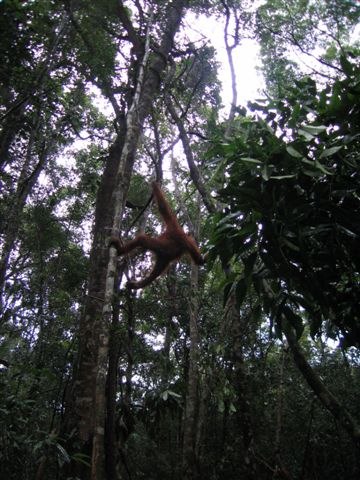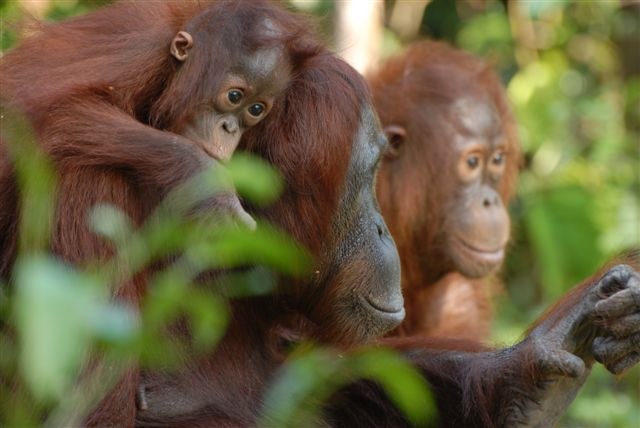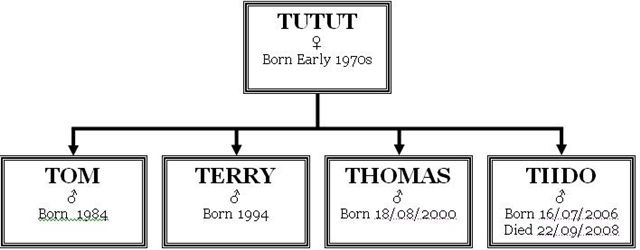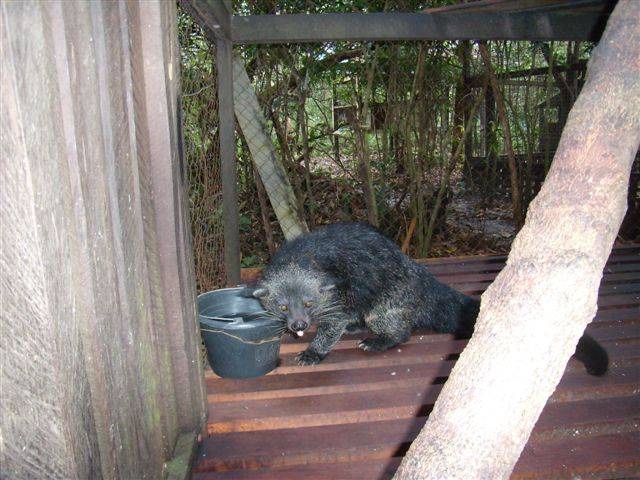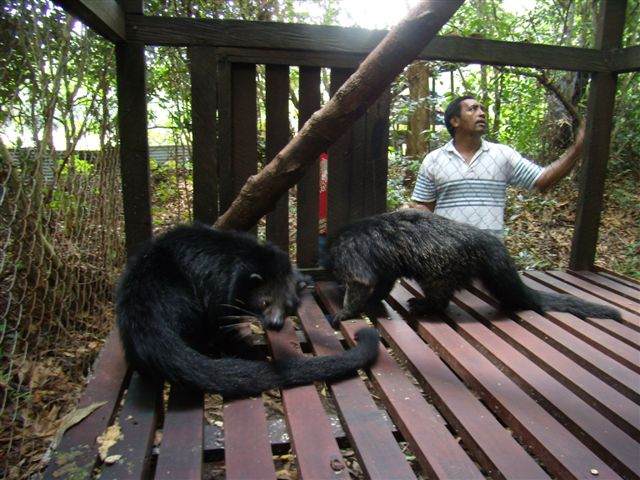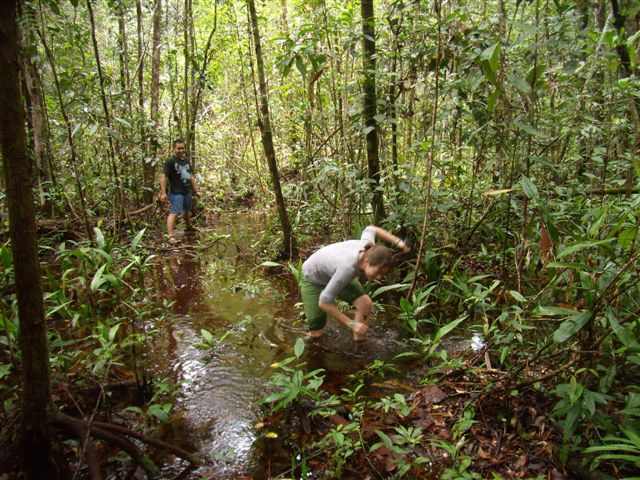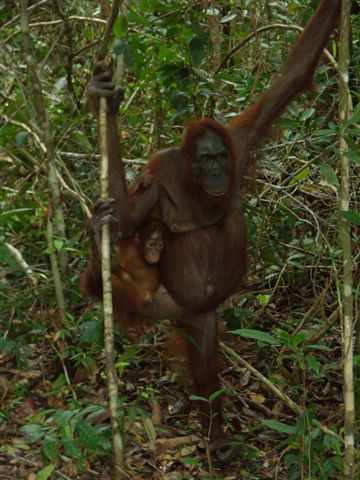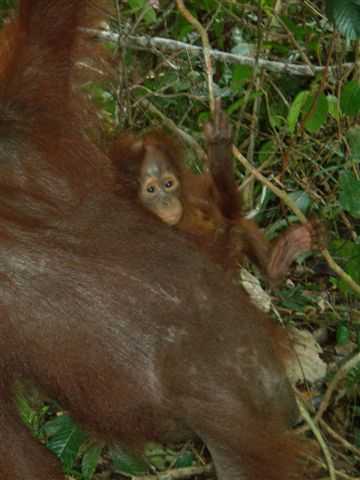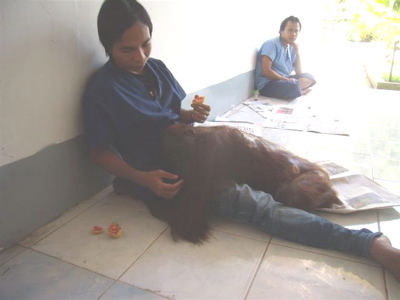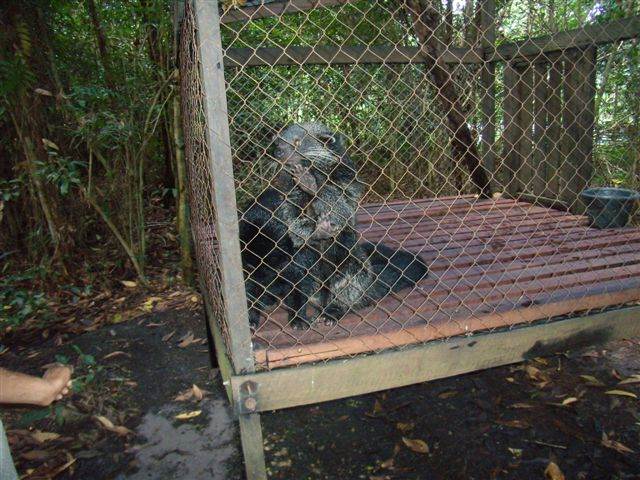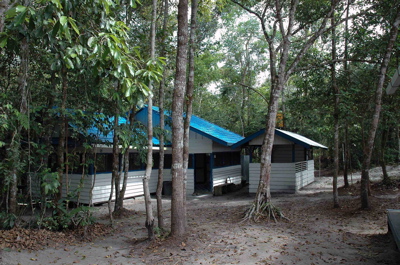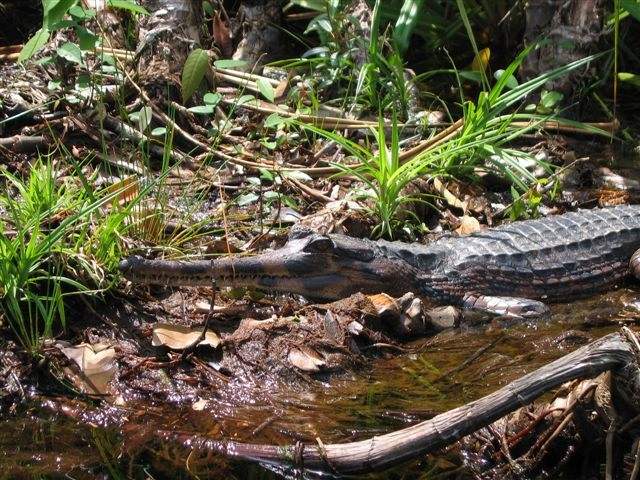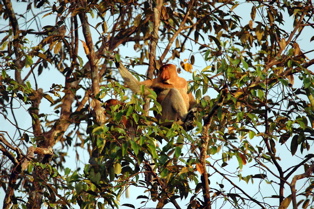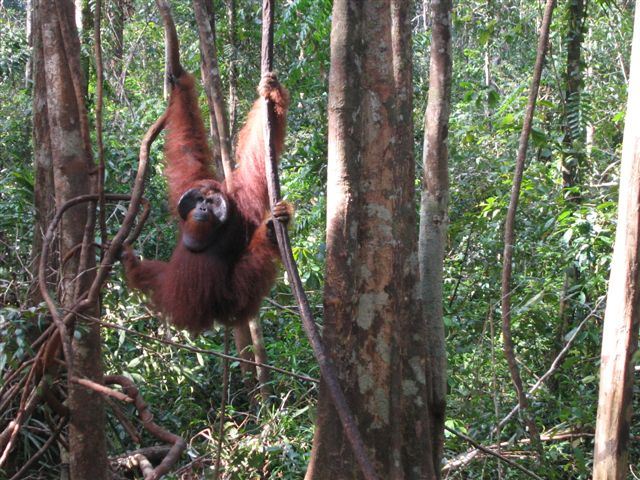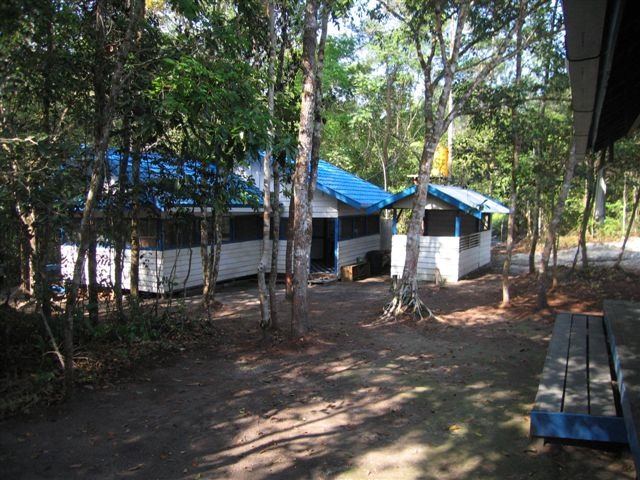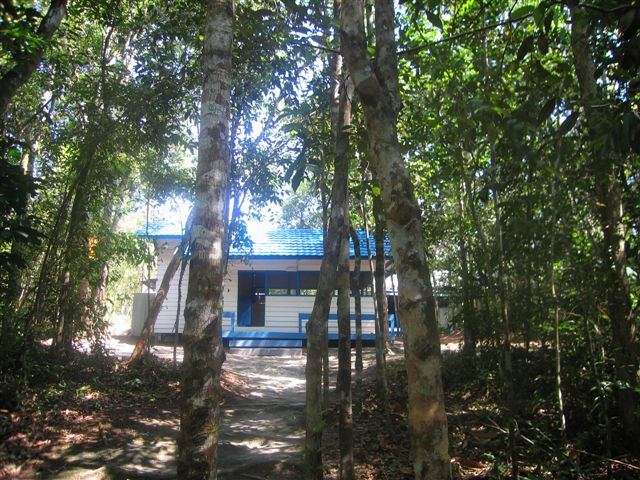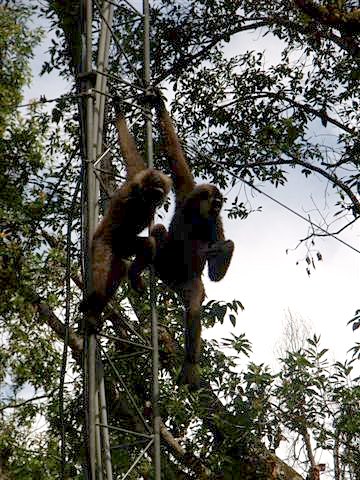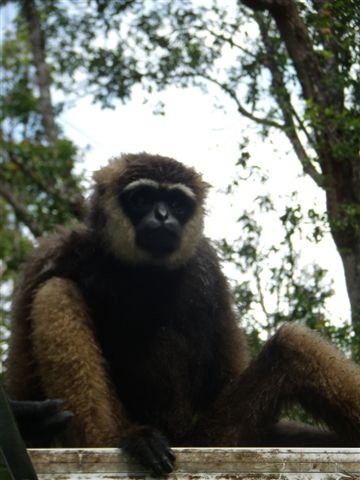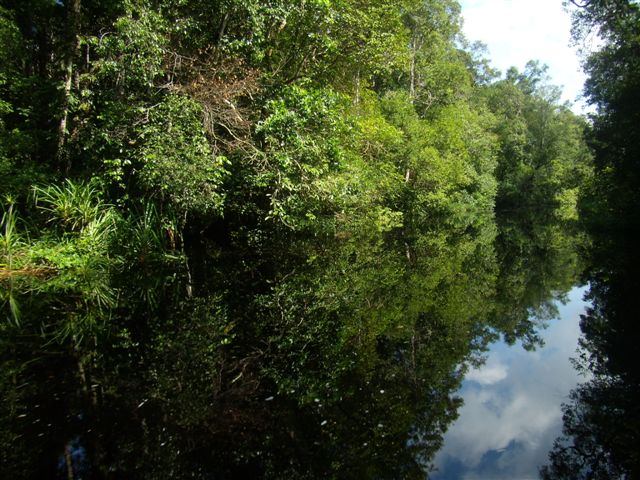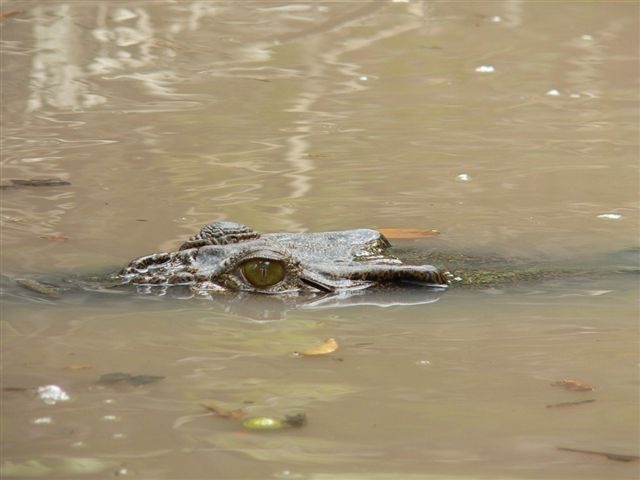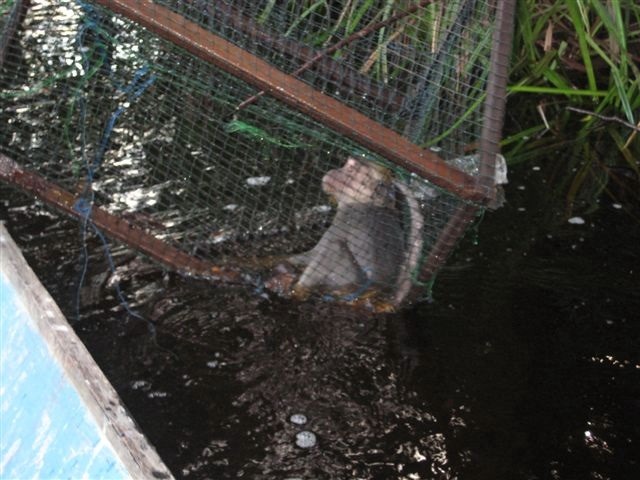The Orangutan Foundation team left the port town of Pangkalan Bun late morning and arrived at the village of Bayat four hours later. After some discussion with the villagers we saw the leopard cub which was being stored in a cardboard box and was silent and motionless.
Dr Fikri, the Orangutan Foundation's vet, examining the cub being held by villagers
Information obtained from the villagers was that leopard cub was found at night on the road leading to the iron ore mining site. They saw the mother clouded leopard walking across the road carrying her cub in her mouth. When the iron ore vehicles passed they must have startled the mother who dropped her cub and ran away. It is thought that the vehicle hit the cub, though very lightly. The iron ore mining vehicles were heading to the port of Pangkalan Bun.
The people of Bayat village had been looking after the cub for 2 days before we arrived.
Orangutan Foundation vet with the cub
Baby clouded leopard weak and silent
Cub not able to walk
The good news is that the cub is progressing well and is in pretty good health. Initially it was always unsteady when standing and its walking wasn’t normal. It had problems with both hind legs. This pain seems to have now gone and its walking is normal and sometimes it even climbs the wall of its cage.
Cub alert and seems healthy
It is eating and drinking. Its current weight is ± 2 Kg. Looking at the husbandry manual on the Clouded Leopard Project website this suggests its age may be between 60 and 90 days old. It is still very early days for the cub. More news to follow soon...
Thank you
Orangutan Foundation
Please consider a donation to support our work by visiting our website or bid on a Gary Hodge's print that is being auction in aid of the Foundation. Thank you!









